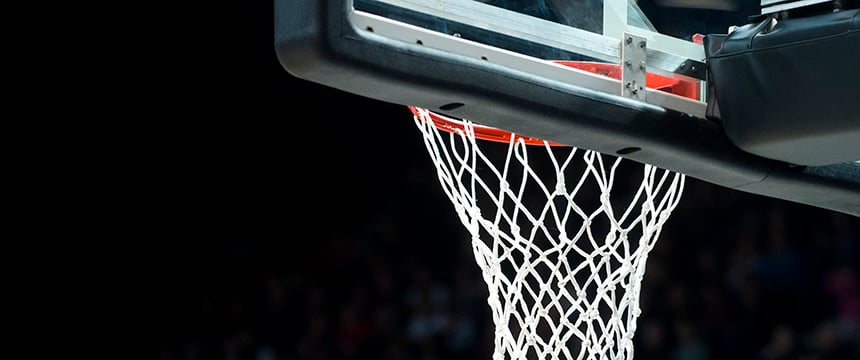
The first year of the “NIL era” of college sports saw popular attention focused on the rise of the individual, as star student athletes began to command eye-popping fees to license their personal likenesses in any number of ways. While seven-figure endorsement deals to college freshmen understandably captured the collective imagination, there is reason to believe that collegiate group licensing could represent an even greater sea change in NIL’s second year.
In the context of name, image and likeness licensing, collegiate group licensing typically involves several individual student athletes pooling their NIL rights into a collective license to be marketed and sold as one. In some cases, colleges themselves permit their intellectual property (such as logos, names and color schemes) to be incorporated into group licenses with student athletes. The result can be a co-branding force multiplier that maximizes the value of each licensee beyond its individual marketability. Further, group licensing aligns the incentives of student athletes and universities by expanding access to NIL opportunities to a wider group of student athletes and by increasing sponsorship and merchandising revenue for college athletic departments.
During the first several months of the NIL era, certain regulatory issues seemed to limit the viability of group licensing in college sports. Those issues have largely been resolved, as relevant regulations at the NCAA, state, and institutional levels increasingly encourage the practice. In fact, between September 2021 and August 2022, there has been a 175% increase in the number of collegiate group licensing deals. Now, one year into the NIL era, the majority of Power Five colleges and several Group of Five colleges have aggressively embraced group licensing and look to further capitalize on this growing market in the year ahead.
Among the legal issues initially thought to limit the viability of collegiate group licensing was the organizational structure of college sports. Unlike professional sports, where players’ unions have aggregated players’ name, image and likeness rights as one, college athletes are not represented by a single union or trade association that can act as a clearinghouse for group licensing deals. Instead, private group licensing companies like OneTeam have begun to fill this role by sourcing and negotiating group licensing deals on behalf of groups of college athletes. Group licensing brands have also found success working directly with athletic departments to gain the necessary licenses to feature a particular group of athletes at that university.
Another concern was whether colleges could license their intellectual property without violating NCAA bylaws or state NIL laws. At first, the NCAA contemplated a blanket prohibition on all college engagement in co-branded NIL deals with student athletes. Ultimately, however, the NCAA adopted an interim NIL policy which instead left the issue to be decided by state laws or individual university policies, as applicable. Currently, most state NIL laws, with the exception of those in Texas and Oklahoma, do not prohibit colleges from licensing their intellectual property in NIL deals, while others states such as Connecticut have passed amendments to remove these restrictions where they once existed. Consequently, college co-branding has become a question of university discretion, which colleges are increasingly more than happy to exercise in the name of promoting lucrative licensing deals that benefit both student athletes and the schools themselves.
Finally, certain state NIL laws impose restrictions on college facilitation of NIL deals. The extent to which colleges could engage in an active role in NIL therefore was and remains a very open question. By their very nature, group licensing deals occur when colleges engage with companies like The Brandr Group to create and market co-branded products. In so doing, university-led activity could fall within some state laws’ definitions of university “facilitation” of deals or “causing compensation” to be paid to athletes. Although the facilitation issue remains a concern in some states, the widespread amendment of state NIL laws to scrap college facilitation restrictions combined with the NCAA’s focus on enforcing its restrictions on pay-for-play and recruiting-related inducements have created a seemingly more relaxed regulatory environment where universities are more comfortable engaging in group licensing arrangements — and more. To that end, many colleges, led by Ohio State University, have taken facilitation of NIL activity to another level, by creating divisions within their own athletic departments to assist in directly connecting and coordinating NIL activities for its student athletes.
Underlying each of these trends is a competitive desire by universities and state legislatures to provide the best NIL environments for their athletes. Foley & Lardner’s NIL Law Tracker counts eight state legislatures that have repealed initial restrictions on NIL deal-making. Increasingly, universities are seeking creative ways to provide their athletes with opportunities to maximize their NIL value. Group licensing — now embraced by over 50 Power Five universities — presents the latest frontier of these efforts.
Zack Flagel and Gregory Marino are litigation attorneys in Foley & Lardner LLP’s Sports & Entertainment Group and are members of the firm’s Name, Image and Likeness Task Force. The authors would like to thank summer associate Hunter Tracey for his assistance on this article.
